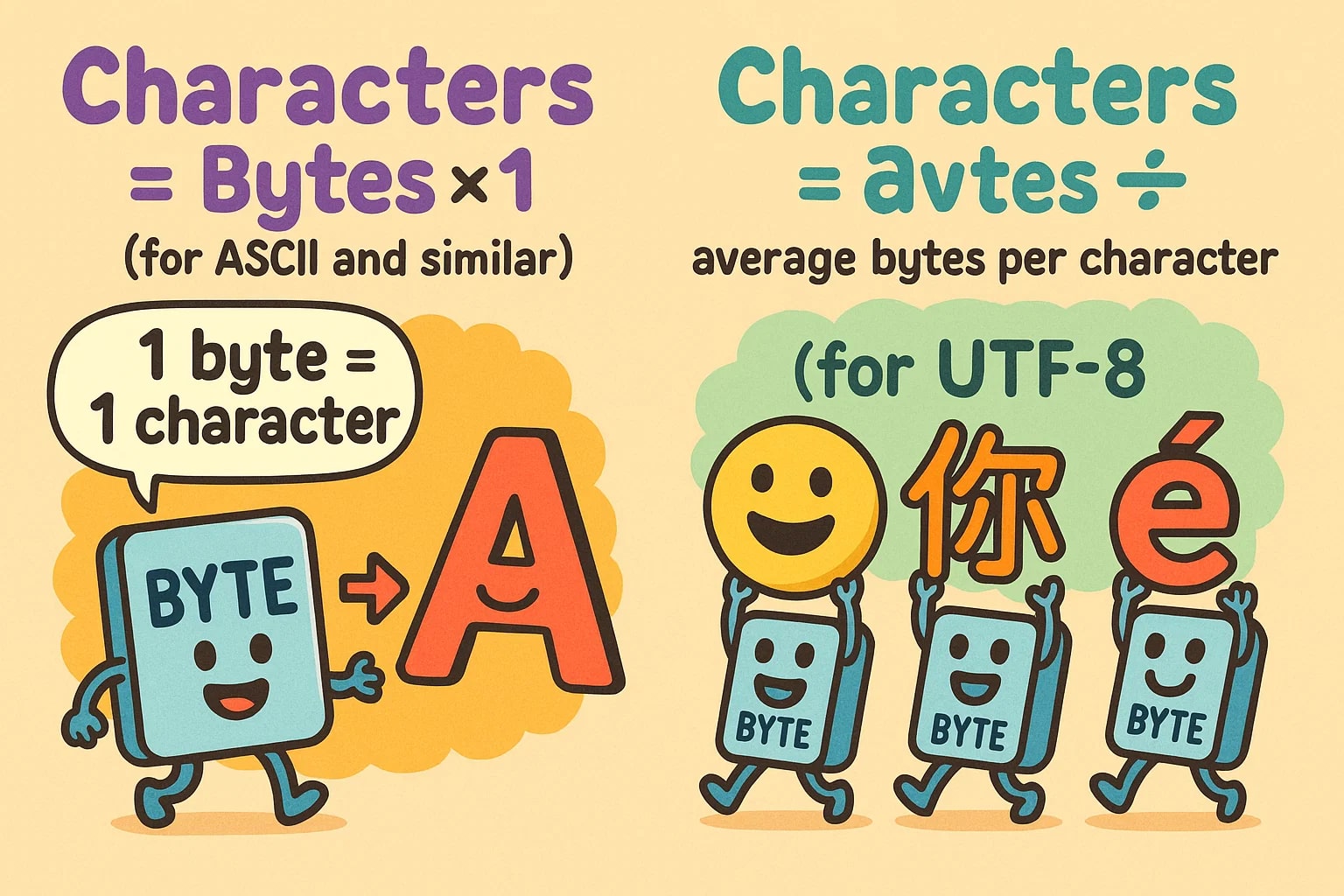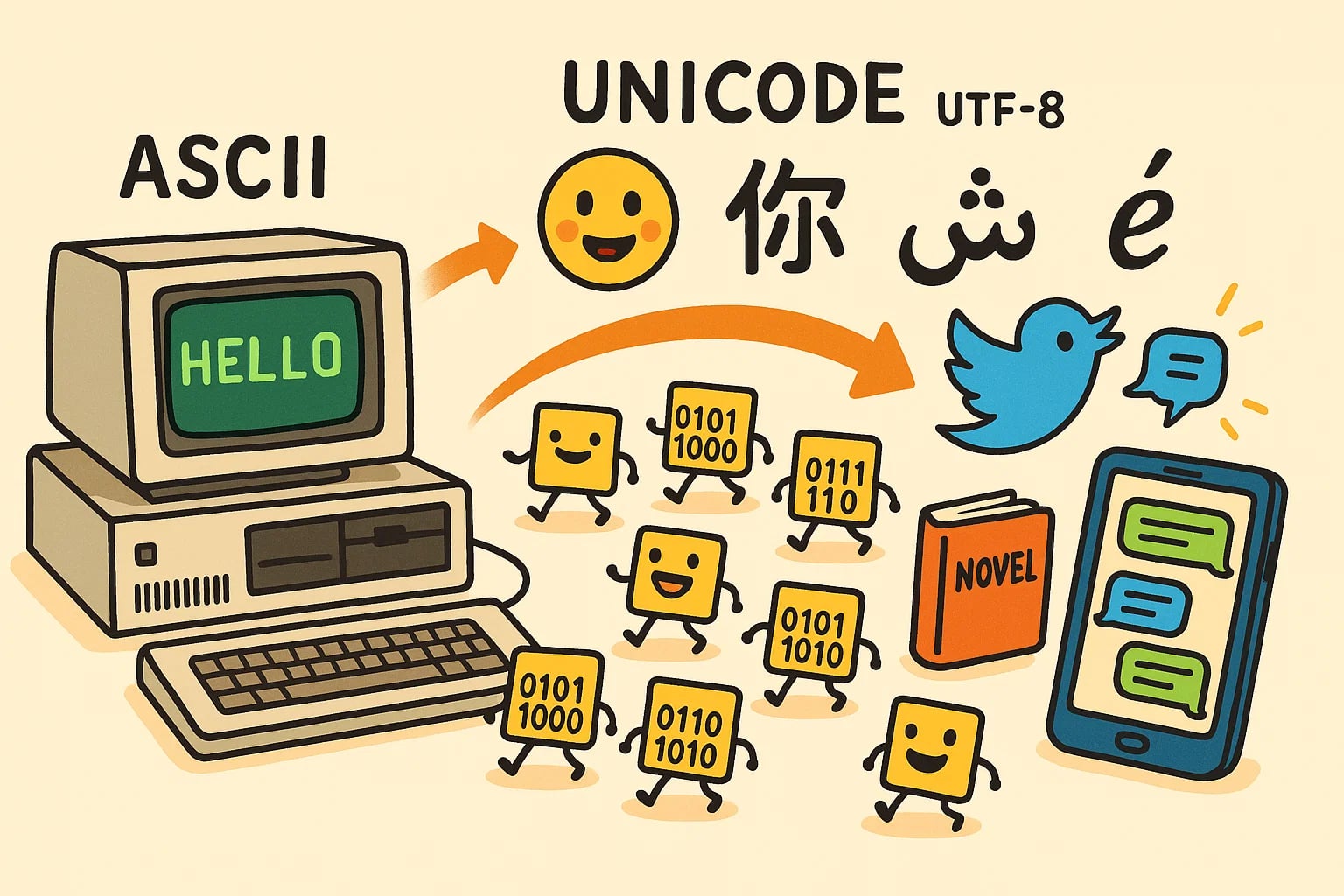byte to character – How to convert B to char
Bytes and characters are both everywhere — from the way text is stored in your documents to how it's transmitted over the internet. At a glance, it might seem like 1 byte always equals 1 character, but there’s a bit more nuance hiding beneath the surface. Let’s break down how they relate and how to convert bytes into characters properly.

What is a byte (B)?
A byte is a unit of digital information that contains 8 bits. It’s the base unit for storing and processing data in nearly every system. When you save a file, send a message, or load a website, data is being measured, transmitted, and interpreted in bytes.
In the context of text, a byte often represents a single character, but not always — that depends on character encoding, which we’ll get into next.
What is a character (char)?
A character is any single symbol or letter you can type or display: a, 9, #, 中, ♥, and so on. In digital systems, each character is stored as one or more bytes using a character encoding — a system that maps bytes to readable symbols.
Some common encoding standards include:
-
ASCII – uses 1 byte per character; covers basic English letters, numbers, and symbols.
-
UTF-8 – variable-length; uses 1 to 4 bytes per character, depending on the symbol.
-
UTF-16 – often uses 2 bytes, but some characters take 4 bytes.
-
ISO 8859-1 – 1 byte per character for Western European languages.
How to convert byte to character
The conversion depends on the encoding system used. In basic ASCII (or any single-byte encoding):
1 byte = 1 character
So the formula becomes:
characters = bytes × 1 (for ASCII and similar)
For multi-byte encodings like UTF-8:
characters = bytes ÷ average bytes per character
This value varies, but for general use in UTF-8, a rough average is 1.1 to 1.5 bytes per character, depending on the language and symbols.
✅ Example: Convert 50 bytes to characters (using ASCII)
characters = 50 × 1
characters = 50
So, in a system using 1 byte per character, 50 bytes equals 50 characters.
✅ Example: Convert 120 bytes to characters (using UTF-8, average 1.5 bytes/char)
characters = 120 ÷ 1.5
characters = 80
So, 120 bytes in UTF-8 could represent around 80 characters, depending on content.
Need to run more exact conversions? Try the Data Storage Converter or explore other tools in our Conversion tools directory.
Did you know?
-
The original ASCII standard was created in the 1960s and includes just 128 characters, all using 1 byte each.
-
UTF-8, introduced in the 1990s, became the dominant encoding on the web because it handles all characters in all languages — including emojis.
-
A Chinese character in UTF-8 typically takes 3 bytes, meaning 1,000 bytes might only store about 333 characters of Mandarin text.
-
Emojis like 😊 or 🚀 often use 4 bytes in UTF-8 — so not all characters are equal in byte size.
-
In early computers, saving memory was crucial. Character encodings like 6-bit or even 5-bit (Baudot code) were used to fit more text into less space.
The text behind the numbers – Where characters and bytes connect
In 1981, IBM released the original PC, which used ASCII encoding to display and store characters. Each letter, number, or symbol used exactly 1 byte, and that set the tone for decades of computing. You typed a sentence — your computer stored it, byte by byte, character by character.
But as computing went global, so did the need for a wider range of characters. Enter Unicode, and especially UTF-8 — a smart system where common English characters still use 1 byte, but complex symbols or foreign scripts expand to 2, 3, or even 4 bytes. This allowed developers to support every language, symbol, and emoji without wasting space.
Today, whether you’re writing a tweet or storing a novel, bytes and characters are still in conversation — and their relationship shapes everything from file size to font rendering.

One byte, maybe one character — sometimes more
The conversion between byte and character isn’t always one-to-one. It depends on encoding, language, and symbol type.
Use the base:
characters = bytes × 1 (for ASCII)
or
characters = bytes ÷ avg. byte-per-character rate (for UTF-8 and others)
To simplify all your digital unit conversions, check out the Data Storage Converter or explore the full range of Conversion tools to keep your work precise and efficient.

